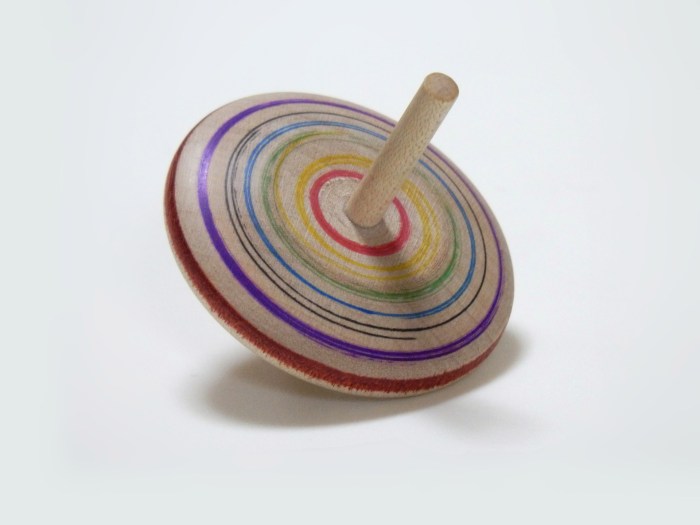13 things happy people choose every day: This exploration dives into the daily habits and choices that contribute to a fulfilling life. We’ll uncover the core principles behind happiness, examining how these choices impact well-being and lead to a more positive outlook. From defining happiness itself to practical strategies for implementing these choices, this journey promises insights for anyone seeking a happier existence.
The article delves into the multifaceted nature of happiness, contrasting different perspectives, and exploring the crucial role of self-awareness. It identifies 13 key choices happy individuals make daily, providing examples and explanations for each. Strategies for integrating these choices into daily routines, overcoming obstacles, and tracking progress are also detailed. The article also discusses external factors and the interconnectedness of these choices to offer a comprehensive approach to achieving happiness.
Defining Happiness: 13 Things Happy People Choose Every Day
Happiness, a concept deeply woven into the human experience, is more than just a fleeting feeling. It’s a complex tapestry woven from various threads of emotions, thoughts, and actions. While often perceived as a singular state, happiness encompasses a multifaceted range of experiences, shaped by individual perspectives and circumstances. This exploration delves into the diverse facets of happiness, offering a comprehensive understanding of its nature.Defining happiness proves challenging due to its subjective and personal nature.
Different individuals experience happiness in different ways, reflecting their unique values, beliefs, and life circumstances. This subjective experience necessitates an understanding beyond simple definitions, acknowledging the multifaceted nature of this human emotion.
Different Perspectives on Happiness
Understanding happiness involves considering various perspectives, including the distinction between hedonic and eudaimonic approaches. Hedonic happiness focuses on pleasure and the maximization of positive experiences, often tied to external factors like material possessions or social validation. Eudaimonic happiness, in contrast, emphasizes personal growth, meaning, and purpose. It’s rooted in internal values and a sense of contributing to something larger than oneself.
Subjective Well-being and Happiness
Subjective well-being (SWB) is closely linked to happiness. SWB encompasses a person’s overall evaluation of their life satisfaction, including positive emotions and the absence of negative ones. It emphasizes the individual’s perception of their own happiness rather than an external assessment. A high level of SWB is generally associated with a greater sense of well-being and happiness.
For instance, individuals who actively engage in activities that foster positive emotions and reduce stress tend to report higher levels of SWB.
Self-Awareness and Personal Happiness
Self-awareness plays a crucial role in understanding and cultivating personal happiness. It involves recognizing one’s own values, beliefs, strengths, and weaknesses. By understanding these internal factors, individuals can align their actions with their goals and make informed choices that contribute to their well-being. For example, a person who recognizes a need for social connection might actively seek out opportunities to interact with others, leading to a more fulfilling and happy life.
Contrasting Aspects of Happiness
| Aspect | Description | Example |
|---|---|---|
| Emotional | The range of feelings experienced, encompassing positive emotions (joy, contentment, love) and negative emotions (sadness, anger, fear). | Experiencing gratitude for a positive event, or learning to manage feelings of anxiety. |
| Mental | Cognitive processes like thoughts, beliefs, and perceptions. A positive mental outlook contributes to overall well-being. | Cultivating optimism and positive self-talk, or engaging in activities that stimulate creativity. |
| Physical | Physical health and well-being, including aspects like sleep, nutrition, and exercise. A healthy body contributes to a healthy mind and overall happiness. | Maintaining a balanced diet, getting sufficient sleep, and engaging in regular physical activity. |
Identifying the 13 Choices
Happiness isn’t a destination, but a journey shaped by the choices we make each day. These choices, small and seemingly insignificant, accumulate to create a powerful impact on our overall well-being. Understanding these choices and their implications allows us to consciously cultivate a happier, more fulfilling life.This exploration delves into 13 specific daily choices that contribute to a more joyful existence.
We’ll examine how these choices contrast with common negative habits, and analyze the potential consequences of neglecting them. By understanding these dynamics, you can consciously cultivate habits that nurture your happiness.
Daily Choices for Enhanced Well-being
Cultivating a happy life involves making conscious choices that nurture our mental, emotional, and physical well-being. The following choices are integral to this process.
- Prioritizing Self-Care: Engaging in activities that nourish your physical and mental well-being, such as exercise, healthy eating, and sufficient sleep. For example, a 30-minute walk in nature, a nutritious lunch, and 7-8 hours of quality sleep each night. Neglecting self-care often leads to burnout and reduced energy levels, impacting overall happiness.
- Mindful Consumption: Being present and appreciative in your daily experiences, whether it’s savoring a meal, enjoying a conversation, or appreciating a beautiful sunset. A mindful approach fosters gratitude and appreciation, enhancing overall contentment. Conversely, mindless consumption often leads to feelings of dissatisfaction and a lack of connection.
- Cultivating Gratitude: Actively acknowledging and appreciating the positive aspects of your life, big or small. This could involve writing in a gratitude journal, expressing thanks to others, or simply reflecting on what you’re thankful for. Neglecting gratitude often results in a focus on what’s lacking, potentially hindering happiness.
- Setting Realistic Goals: Setting achievable goals and celebrating progress, fosters a sense of accomplishment and motivation. Instead of overwhelming yourself with unattainable goals, aim for small, manageable steps that build momentum and encourage sustained effort. Setting unrealistic goals often leads to frustration and feelings of inadequacy.
- Practicing Forgiveness: Letting go of resentment and anger towards yourself or others. Forgiving yourself and others allows you to move forward and release emotional burdens, promoting inner peace. Holding onto grudges often results in prolonged stress and emotional turmoil.
- Building Strong Relationships: Nurturing meaningful connections with loved ones, family, and friends. Quality time spent with loved ones, supportive conversations, and acts of kindness strengthen relationships and provide emotional support. Neglecting relationships often leads to feelings of isolation and loneliness.
- Learning and Growing: Actively seeking knowledge and personal development through reading, courses, or new experiences. Continuous learning keeps the mind engaged and expands horizons, contributing to a sense of fulfillment. Stagnation and a lack of intellectual curiosity often lead to boredom and a diminished sense of purpose.
- Practicing Mindfulness: Paying attention to the present moment without judgment. Mindfulness practices, such as meditation or deep breathing exercises, can help reduce stress and promote emotional regulation. Ignoring the present moment often leads to anxiety and worry.
- Maintaining Physical Health: Prioritizing regular exercise and a healthy diet. Physical well-being is closely linked to mental well-being, as exercise releases endorphins and promotes better sleep. Neglecting physical health often leads to physical ailments and reduced energy levels.
- Practicing Self-Compassion: Treating yourself with kindness and understanding, especially during challenging times. Self-compassion fosters resilience and allows for growth from mistakes. Harsh self-criticism often leads to self-doubt and a lack of motivation.
- Expressing Gratitude Regularly: Regularly expressing appreciation to others. Showing gratitude strengthens relationships and creates a more positive social environment. Neglecting to express gratitude can lead to feelings of resentment and disconnection.
- Engaging in Hobbies: Pursuing activities that bring you joy and fulfillment. Engaging in hobbies provides opportunities for creativity, relaxation, and personal growth. Neglecting hobbies often leads to a lack of stimulation and feelings of emptiness.
- Seeking Professional Help When Needed: Recognizing the need for support and actively seeking professional help when dealing with mental health challenges. Seeking help demonstrates strength and promotes well-being. Avoiding professional help can prolong mental health challenges and hinder personal growth.
- Practicing Emotional Regulation: Developing the ability to manage and respond to emotions in a healthy way. This involves recognizing emotional triggers, developing coping mechanisms, and practicing emotional intelligence. Lack of emotional regulation often leads to impulsive reactions and difficulties in maintaining healthy relationships.
Negative Habits and Their Impact
Common negative habits often undermine the choices Artikeld above, contributing to unhappiness. For instance, procrastination, excessive social media use, and negativity can hinder the cultivation of positive habits. Understanding these negative patterns can help you identify and address potential obstacles to happiness.
Ever wondered what happy people do differently? It’s not just about luck, it’s about choices. Focusing on 13 specific things they choose every day can really make a difference. For busy working parents, though, carving out time for those 13 things can feel impossible. Luckily, 6 time saving tips for working parents can help! By implementing these simple strategies, you can reclaim precious time and make room for the positive habits that contribute to happiness.
Ultimately, prioritizing these choices will make a real difference in your overall well-being.
Daily Practices for Each Choice
Embarking on a journey toward happiness necessitates consistent action. Simply acknowledging the 13 choices isn’t enough; translating them into daily practices is crucial for lasting positive change. This section delves into practical strategies for integrating these choices into your routine, fostering sustainable habits, and understanding the importance of consistency.This exploration details how to implement each choice into a daily routine, providing actionable steps and time allocation suggestions.
Developing these habits requires dedication and commitment, but the rewards—enhanced well-being and increased happiness—are well worth the effort.
Implementing Gratitude into Daily Life
Cultivating a daily gratitude practice involves actively acknowledging and appreciating the positive aspects of your life. This isn’t just about recalling pleasant memories; it’s about actively focusing on the present. Start by dedicating a few minutes each morning or evening to a gratitude journal or a simple mental review. Consider listing three things you’re grateful for, focusing on their impact on your well-being.
Reflect on how these aspects contribute to your overall happiness. This practice can be integrated into existing routines like morning meditation or evening reflection.
Prioritizing Self-Care
Self-care encompasses a wide range of activities that nourish your physical, mental, and emotional well-being. It’s about creating a daily schedule that incorporates activities you genuinely enjoy and that help you unwind and recharge. This might include exercise, reading, spending time in nature, or pursuing a hobby. Allocate specific time slots for self-care, treating it as an essential part of your day, much like a scheduled meeting.
Consider making it a daily habit to take a short walk, listen to calming music, or engage in activities that promote relaxation.
Nurturing Positive Relationships
Nurturing positive relationships requires consistent effort and intentional interaction. This includes making time for loved ones, actively listening, and expressing appreciation. Schedule specific time slots for connecting with family and friends, whether it’s a phone call, a video chat, or a dedicated evening meal together. If you have existing social commitments, be mindful of making them a priority.
Mindful Communication
Mindful communication involves being present and attentive when interacting with others. It means actively listening to understand the other person’s perspective and expressing yourself clearly and respectfully. Practice active listening techniques, such as paraphrasing what the other person says to ensure understanding. Before responding to a message or interaction, take a moment to compose your thoughts and ensure your response is both thoughtful and considerate.
Managing Stress Effectively
Effective stress management is a crucial component of daily well-being. Techniques like deep breathing exercises, mindfulness meditation, and engaging in hobbies can help mitigate stress. Schedule specific time slots for relaxation and stress reduction, perhaps 15-20 minutes each day. Regular exercise, a healthy diet, and sufficient sleep are essential components of a well-rounded stress management plan.
Setting Meaningful Goals
Setting meaningful goals requires clarity and a focus on what truly matters to you. Identify your aspirations and break them down into achievable daily steps. Schedule time in your day to review your progress and adjust your approach as needed. Start with small, manageable goals to build momentum and maintain motivation.
Practicing Forgiveness
Practicing forgiveness involves releasing resentment and anger towards yourself or others. This involves acknowledging the hurt, understanding the situation, and choosing to let go. Regular meditation can help to develop a more forgiving mindset. Recognize that forgiveness is not condoning harmful behavior, but rather a conscious choice to release the negativity it brings.
Building Resilience
Building resilience involves developing the ability to bounce back from setbacks and challenges. It’s about cultivating a growth mindset, accepting that mistakes are part of the learning process, and focusing on solutions. When faced with adversity, take time to analyze the situation, identify potential solutions, and develop a plan to overcome the challenge.
Practicing Self-Compassion
Practicing self-compassion involves treating yourself with the same kindness and understanding that you would offer a friend. Acknowledge your imperfections and failures without judgment. Instead of self-criticism, focus on self-encouragement and support. Journaling can be an effective way to track your thoughts and feelings related to self-compassion.
Practicing Gratitude
Practicing gratitude involves acknowledging and appreciating the positive aspects of your life. This involves actively focusing on the present moment and reflecting on the things you’re thankful for. Keep a gratitude journal or simply take a few minutes each day to reflect on positive experiences.
Focusing on Strengths
Focusing on your strengths involves identifying and leveraging your talents and abilities. Regularly reflecting on your achievements, both big and small, can help build confidence and self-esteem. Identify areas where you excel and incorporate these strengths into your daily activities.
Learning Continuously
Learning continuously involves seeking new knowledge and skills. Engage in activities that stimulate your mind, such as reading, taking online courses, or attending workshops. Schedule specific time slots for learning, just like any other important appointment.
Living in the Present Moment
Living in the present moment involves paying attention to your thoughts, feelings, and sensations without judgment. Practice mindfulness techniques, such as meditation or deep breathing exercises, to cultivate present-moment awareness. Notice the sights, sounds, and sensations around you without getting carried away by thoughts of the past or future.
Table: Daily Practices for 13 Choices
| Choice | Daily Practice | Time Allocation (approx.) |
|---|---|---|
| Gratitude | Journaling/reflection | 5-10 minutes |
| Self-Care | Exercise/relaxation | 15-30 minutes |
| Positive Relationships | Connecting with loved ones | 15-30 minutes |
| Mindful Communication | Active listening/thoughtful responses | Ongoing |
| Stress Management | Deep breathing/meditation | 10-15 minutes |
| Meaningful Goals | Goal review/planning | 5-10 minutes |
| Forgiveness | Meditation/reflection | 5-10 minutes |
| Resilience | Problem-solving/planning | 10-15 minutes |
| Self-Compassion | Self-encouragement/journaling | 5-10 minutes |
| Gratitude | Journaling/reflection | 5-10 minutes |
| Strengths | Skill development/reflection | 10-20 minutes |
| Learning | Reading/courses/workshops | 15-30 minutes |
| Present Moment | Mindfulness exercises | 5-10 minutes |
Overcoming Challenges
Embarking on a journey toward happiness is not always a smooth road. Life throws curveballs, and challenges can derail our best intentions. This section dives into common obstacles that prevent us from consistently practicing the 13 choices and provides practical strategies to navigate these hurdles.Understanding that setbacks are inevitable is crucial. The key lies in developing resilience and self-compassion, enabling us to bounce back from disappointments and maintain our focus on personal growth.
We’ll explore how to adapt the 13 choices to fit individual circumstances, fostering a more realistic and sustainable approach to happiness.
Ever wondered what makes some people just radiate happiness? Turns out, it’s often about the little choices they make every day. Taking care of your gut health is crucial, and finding the right probiotics like the best probiotics for men can have a surprisingly positive impact on your overall well-being. This, combined with the other 12 elements of a happy life, like mindful gratitude and regular exercise, can lead to a more fulfilling and joyful existence.
It all starts with those daily decisions!
Common Obstacles to Making the 13 Choices
Obstacles to implementing the 13 choices often stem from internal and external factors. These range from ingrained habits and limiting beliefs to external pressures and unexpected life events. Understanding these obstacles is the first step in developing strategies to overcome them.
Strategies for Overcoming Obstacles
Effective strategies for overcoming obstacles involve proactive planning, flexible adaptation, and consistent self-reflection. This involves identifying potential triggers and developing coping mechanisms. For example, if a lack of time is a persistent challenge, scheduling specific time slots for practices can help. Similarly, if perfectionism is an issue, embracing imperfection and celebrating small wins can foster a more positive outlook.
The Importance of Self-Compassion and Resilience
Self-compassion involves treating oneself with the same kindness and understanding one would offer a friend facing similar difficulties. This crucial aspect allows for navigating setbacks without self-criticism, fostering a more supportive inner dialogue. Resilience, the ability to adapt and recover from adversity, complements self-compassion. It empowers individuals to view challenges as opportunities for growth rather than insurmountable obstacles.
Adjusting the 13 Choices to Individual Circumstances
The 13 choices are not rigid rules but rather guidelines. Adapting them to individual circumstances ensures that they remain relevant and effective. For example, if someone has a physically demanding job, adjusting the “Prioritize physical well-being” choice might involve finding shorter, more effective exercise routines. This personalization ensures that the choices resonate with the unique needs and realities of each person’s life.
Potential Roadblocks and Solutions
| Roadblock | Solution |
|---|---|
| Lack of time | Prioritize tasks, break down large tasks into smaller, manageable steps, utilize time-management techniques like the Pomodoro Technique. |
| Procrastination | Set clear deadlines, create a dedicated workspace, break down tasks into smaller steps, reward yourself for completing tasks. |
| Perfectionism | Embrace imperfection, focus on progress, celebrate small wins, reframe mistakes as learning opportunities. |
| Negative self-talk | Challenge negative thoughts, replace them with positive affirmations, practice mindfulness, seek support from a therapist or mentor. |
| External pressures | Set boundaries, prioritize your needs, communicate your limits to others, develop a strong support network. |
Measuring Progress and Maintaining Momentum
Tracking your progress in implementing the 13 choices for happiness is crucial for maintaining motivation and consistency. This involves understanding how each choice impacts your overall well-being, celebrating achievements, and learning from setbacks. Regular evaluation and adjustments are vital for ensuring you stay on track towards a happier life.Consistent self-assessment allows you to identify areas where you’re excelling and areas needing improvement.
This is not about perfection, but about recognizing patterns and making informed choices. By understanding the impact of each choice, you gain a deeper insight into what truly contributes to your happiness.
Tracking Progress in Implementing the 13 Choices
Regularly monitoring your progress helps you identify trends and adjust your approach. Using a journal or a dedicated app can facilitate this process. Write down specific instances where you’ve applied each choice, noting the circumstances and your emotional response. This detailed record provides valuable insight into the effectiveness of each choice in your personal context.
Assessing the Impact of Each Choice on Overall Happiness
Measuring the impact of each choice on your overall happiness involves understanding how you feel after implementing them. A simple rating scale (e.g., 1-5, where 1 is not at all happy and 5 is extremely happy) can help you quantify your feelings. For instance, if you choose to practice gratitude, reflect on how this practice affects your mood and outlook.
This process of self-reflection helps you understand the correlation between specific choices and your happiness levels.
Celebrating Successes and Learning from Setbacks, 13 things happy people choose every day
Celebrating milestones is essential for maintaining motivation. Acknowledge and appreciate every small victory, no matter how insignificant it might seem. This reinforces positive behavior and encourages you to continue. When setbacks occur, analyze the situation to understand the underlying causes. Identify what you could have done differently and adjust your strategy accordingly.
Learn from the experience without self-criticism.
Maintaining Motivation and Consistency
Maintaining motivation requires consistent effort and a proactive approach. Break down large goals into smaller, manageable tasks. This makes the journey less daunting and increases your likelihood of completing each step. Reward yourself for completing tasks, which reinforces positive behavior. Surround yourself with supportive individuals who encourage your progress.
Connect with others who share similar goals for mutual support.
Metrics to Track Progress
This table illustrates metrics to track your progress, including examples of progress charts.
| Choice | Metric | Progress Chart Example |
|---|---|---|
| Practice Gratitude | Number of things you express gratitude for daily. |  |
| Mindful Moments | Number of 5-minute mindful moments per week. |  |
| Positive Self-Talk | Number of times you practice positive self-talk per day. |  |
| Physical Activity | Minutes of exercise per week. |  |
Note: Replace placeholder images with actual charts or graphs for visualization.
Interconnectedness of Choices
The 13 choices for cultivating happiness aren’t isolated actions; they’re interconnected threads woven into the fabric of a fulfilling life. Understanding these connections reveals a holistic approach to well-being, where progress in one area often fuels positive changes in others. Recognizing how choices influence each other allows us to address potential imbalances and create a more sustainable path to lasting happiness.The interconnectedness of these choices highlights a fundamental truth: happiness isn’t a destination but a journey shaped by consistent effort and mindful integration of various aspects of life.
A lack of focus in one area can create ripple effects, impacting other dimensions of well-being.
Categorizing the Interconnected Choices
The 13 choices for a happy life don’t exist in a vacuum. They fall into distinct categories, each contributing to the overall tapestry of well-being. Understanding these categories helps us see the relationships between choices and how they collectively support a more fulfilling existence.
Thinking about the 13 things happy people choose every day? It’s all about small, consistent choices. One of those is actively showing love to those around you. That’s where the 10 little ways to show your kids you love them every day comes in handy. This article provides fantastic ideas, like a simple hug or a listening ear.
Ultimately, remembering those 13 things happy people choose every day, from kindness to gratitude, makes a huge difference in our daily lives.
| Category | Choices | Description |
|---|---|---|
| Mindfulness & Self-Awareness | Mindful Living, Positive Self-Talk, Gratitude Practice, Emotional Regulation, Self-Compassion | These choices form the foundation of self-understanding and emotional intelligence. They influence how we perceive and respond to experiences, impacting choices related to relationships and personal growth. |
| Relationships & Connection | Nurturing Relationships, Meaningful Connections, Healthy Boundaries, Open Communication, Forgiveness | Strong social connections are vital for well-being. These choices support healthy relationships, contributing to a sense of belonging and reducing stress. |
| Purpose & Growth | Setting Meaningful Goals, Learning & Growth, Taking Calculated Risks, Embracing Challenges, Contributing to Something Larger Than Oneself | Finding purpose and engaging in continuous learning and growth are crucial for a fulfilling life. These choices foster a sense of accomplishment and personal development, often influencing how we approach other aspects of life. |
| Physical & Mental Well-being | Prioritizing Sleep, Healthy Diet, Physical Activity, Stress Management, Mindfulness Practices | Physical and mental well-being are essential components of a happy life. These choices directly impact energy levels, mood, and overall resilience, influencing how we engage with relationships and personal growth. |
| Financial & Practical Choices | Financial Planning, Time Management, Decluttering & Organizing, Setting Boundaries | These choices provide a stable foundation for pursuing happiness. They contribute to reducing stress and increasing control over life’s circumstances, enabling us to better manage our time and resources for other areas of well-being. |
Examples of Interdependence
A lack of self-compassion (a choice under Mindfulness & Self-Awareness) can negatively affect relationships (a choice under Relationships & Connection). Someone struggling with self-criticism might be less likely to forgive themselves or others, leading to strained relationships. Similarly, poor time management (a choice under Financial & Practical Choices) can impact stress levels (a choice under Physical & Mental Well-being), potentially affecting emotional regulation and mindful living.
Holistic Nature of Happiness
Happiness is not a single entity but a multifaceted experience resulting from the integration of various aspects of life. Each choice is a building block in the structure of well-being. Understanding their interconnectedness allows us to view happiness not as a collection of individual choices but as a holistic system. A healthy relationship with our physical and mental well-being is crucial for pursuing meaningful connections.
Illustrative Examples

Understanding how the 13 choices translate into tangible actions and positive outcomes is crucial for internalizing their importance. Real-world examples, both of success and struggle, offer invaluable insights into the practical application of these principles. This section explores diverse scenarios, demonstrating the flexibility and adaptability of these choices across different cultural and personal contexts.
Successful Implementation of the 13 Choices
“Sarah, a young entrepreneur, initially struggled with maintaining a healthy work-life balance. By consciously applying the 13 choices, she prioritized her well-being. She started setting clear boundaries between work and personal time, using time management techniques, and consistently practicing mindfulness. This led to reduced stress, increased productivity, and a more fulfilling personal life. She was able to achieve a healthier work-life balance while expanding her business.”
Positive Impact on Various Individuals
The positive impact of implementing these choices is not limited to one area. Consider the case of Maria, a teacher who incorporated gratitude practices into her daily routine. This resulted in a more positive classroom environment and improved student engagement. Similarly, David, a community leader, recognized the importance of fostering strong relationships and actively listening to others.
This strengthened his community bonds and facilitated positive social change. These examples highlight the multifaceted benefits of these choices.
Struggling with the Choices and Solutions
While the 13 choices offer a framework for happiness, individuals may encounter challenges in their implementation. For instance, consider a person who struggles with procrastination. One solution is to break down large tasks into smaller, manageable steps, using tools like to-do lists and time blocking. Furthermore, building accountability through support systems or joining a group focused on similar goals can provide encouragement and motivation.
Adapting the Choices to Diverse Cultures and Lifestyles
The core principles of the 13 choices can be adapted to diverse cultural and lifestyle contexts. For example, in cultures emphasizing collectivism, the choice to prioritize relationships could manifest as strengthening family ties and community involvement. Similarly, in cultures where personal expression is highly valued, the choice to embrace self-acceptance might involve actively participating in artistic or creative pursuits.
The 13 choices are not rigid; they are adaptable and relevant to diverse experiences.
Consider the following table outlining how different cultures might interpret and implement the 13 choices:
| Choice | Interpretation (Collectivist Culture) | Interpretation (Individualistic Culture) |
|---|---|---|
| Prioritizing Relationships | Strengthening family and community bonds, supporting extended family | Nurturing close friendships, building strong professional networks |
| Practicing Gratitude | Expressing appreciation for family contributions and communal support | Appreciating individual achievements and personal growth |
| Setting Boundaries | Respecting familial expectations and communal norms | Establishing clear personal limits and asserting individual needs |
External Factors Affecting Happiness
External factors play a significant role in shaping our overall well-being and happiness. While personal choices are crucial, external influences like social support, environmental conditions, and societal pressures can significantly impact our ability to cultivate joy and fulfillment. Understanding these factors allows us to navigate challenges more effectively and make conscious choices to maximize happiness.Our happiness isn’t solely determined by our internal state; external circumstances significantly impact how we experience life.
This includes the supportive network around us, the environment we inhabit, and the expectations we face from society. Recognizing these influences empowers us to take proactive steps to manage our happiness in a way that considers both internal and external forces.
Social Support and Relationships
Strong social connections and supportive relationships are vital for happiness. Positive interactions with family, friends, and community members provide emotional encouragement, practical assistance, and a sense of belonging. These relationships offer a buffer against stress and provide opportunities for shared experiences, laughter, and emotional intimacy. The quality of these relationships directly impacts our emotional well-being and influences our choices.
Environment and Circumstances
The environment significantly impacts our happiness. Factors like safety, security, access to resources, and the overall atmosphere of our surroundings greatly influence our daily experiences. A safe and supportive environment fosters a sense of stability and allows individuals to focus on personal growth and happiness. Conversely, an unsafe or challenging environment can create stress and anxiety, hindering the pursuit of happiness.
Economic stability, access to healthcare, and educational opportunities are also crucial components of a supportive environment.
Societal Expectations and Personal Values
Societal expectations and personal values often intersect in shaping our understanding of happiness. While societal pressures can sometimes lead to feelings of inadequacy or pressure to conform, they can also provide a sense of belonging and shared purpose. Understanding and aligning personal values with societal expectations, where appropriate, can lead to greater fulfillment. Conversely, when these expectations clash with personal values, it can lead to internal conflict and diminished happiness.
Personal Responsibility in Navigating External Pressures
Personal responsibility plays a key role in navigating external pressures and maintaining happiness. While external factors influence our lives, we have the power to choose how we respond to them. This involves developing coping mechanisms, setting boundaries, and cultivating resilience. Personal responsibility also entails acknowledging our capacity to influence our circumstances, even within the context of external factors.
For instance, one might choose to focus on building a strong support system despite external challenges.
Table: Comparison of External Factors Affecting Happiness
| External Factor | Impact on Happiness | Example |
|---|---|---|
| Social Support | Strong social connections provide emotional and practical support, reducing stress and increasing feelings of belonging. | A supportive friend group helping someone cope with a difficult time. |
| Environment | A safe and supportive environment promotes stability and fosters personal growth. A challenging environment can increase stress and anxiety. | A safe neighborhood allowing residents to feel secure and pursue their goals. |
| Societal Expectations | Expectations can either provide a sense of belonging or create feelings of inadequacy. | Pressure to conform to a particular career path or lifestyle. |
| Personal Values | Alignment between personal values and societal expectations can increase fulfillment. Conflict between these can lead to internal conflict. | Choosing a career that aligns with one’s values even if it differs from societal expectations. |
Ending Remarks

In conclusion, the 13 things happy people choose every day are not just isolated actions; they form a powerful interconnected system that shapes overall well-being. By understanding these choices and integrating them into our daily routines, we can cultivate a more fulfilling and joyful life. The key is to be intentional about these choices, embrace self-awareness, and be prepared for the challenges that may arise.
Ultimately, happiness is a journey, not a destination, and these choices are a compass to guide you along the way.











